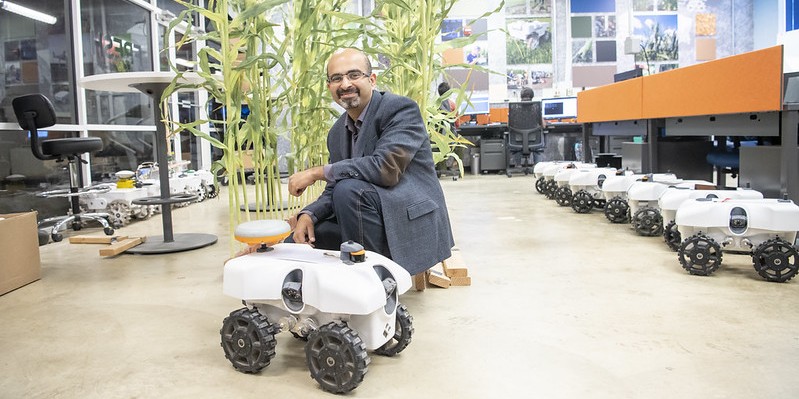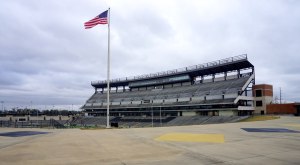University of Illinois’ new robots could help pick blueberries, wipe down hospitals

Researchers at the University of Illinois are developing semi-autonomous robots to assist industry workforces disrupted by the COVID-19 pandemic.
Girish Chowdhary, an assistant professor of agricultural and biological engineering at University of Illinois, said earlier this week that his team is focused on developing robots that can keep health care workers safe while treating COVID-19 patients and filling gaps in disrupted food supply chains. Small, semi-autonomous robots, called TerraSentia, were developed by Chowdhary and his team before the pandemic, but they’ve now been repurposed and given soft robotic arms and “manipulators” to perform new tasks.
“We made a good robotic platform. It has wheels, but it didn’t have any arms; it was just moving around,” Chowdhary said.
Researchers said the robots can pick crops on farms where people are unable work because of social distancing requirements related to the pandemic.
“In some places, fruit is rotting on farms because they’re not able to get people to do the work,” Chowdhary said.
Team members said they plan to begin testing prototypes to pick cherry tomatoes and blueberries this summer and expect to have the robots ready for farm work next year.
Researchers also plan for their robots to help disinfect hospitals.
“Healthcare professionals who work with COVID-19 patients have a higher risk of being exposed to infection,” Chowdhary said. “Those individuals are our first line of defense.”
For health care facilities, Chowdhary’s team is developing a robot that can wipe down surfaces. This is safer, he said, than the method used by existing disinfecting robots, which fill rooms with ultraviolet light for extended periods, a process harmful to human skin that requires that people vacate the area while the robots work.
The new robots will also be equipped with mapping technology, allowing them to follow humans closely as they move around, and creating a record of their travel, revealing to operators which areas have been disinfected.
Chowdhary said their skills could also be useful at schools, universities, offices, restaurants, airports or other high-traffic places in need of constant disinfection.
“COVID-19 isn’t looking like it’s going to disappear any time soon, and there will be other diseases in the future, so the need for these robots will continue,” Chowdhary said.




